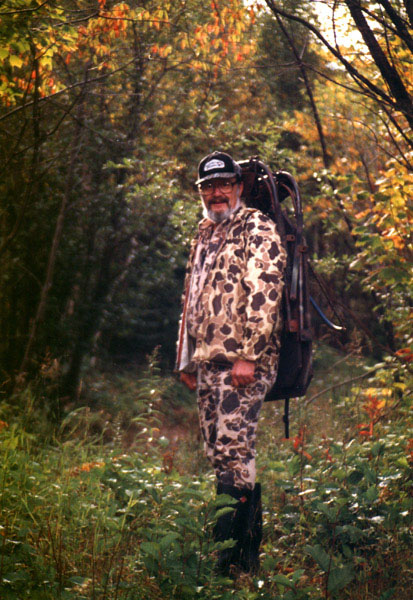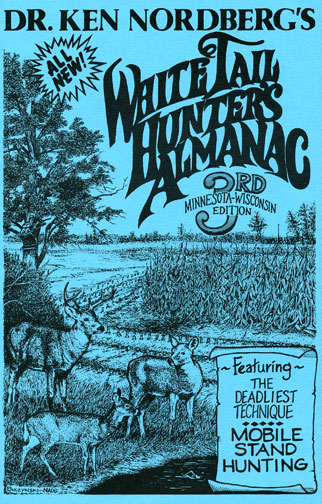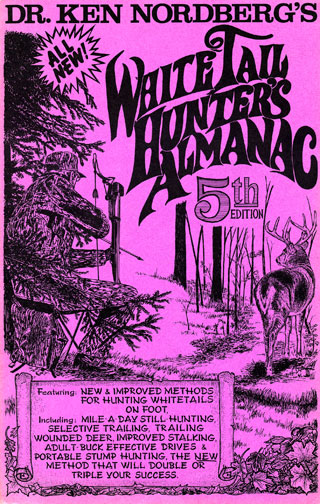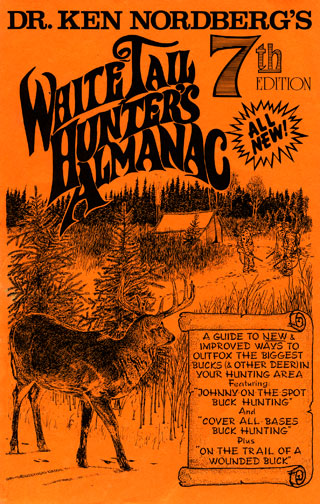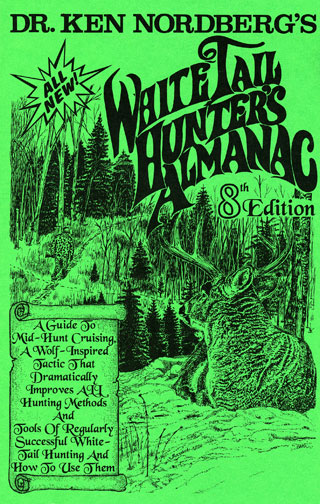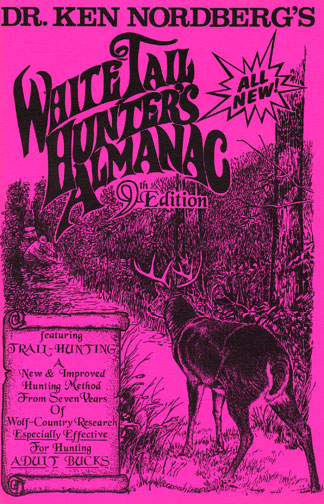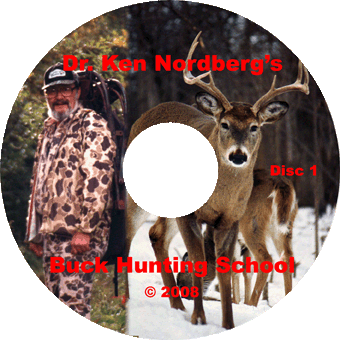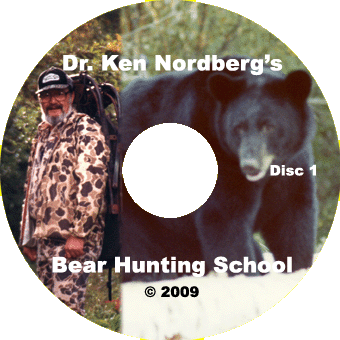Spring Chores that Pay Off in Fall
[Spring Scouting]
By Dr. Ken Nordberg
The following is the another of many older articles that will appear on my website. This is article was first published in Midwest Outdoors in April of 1996. Please share what you learn from these articles with your whitetail hunting friends.
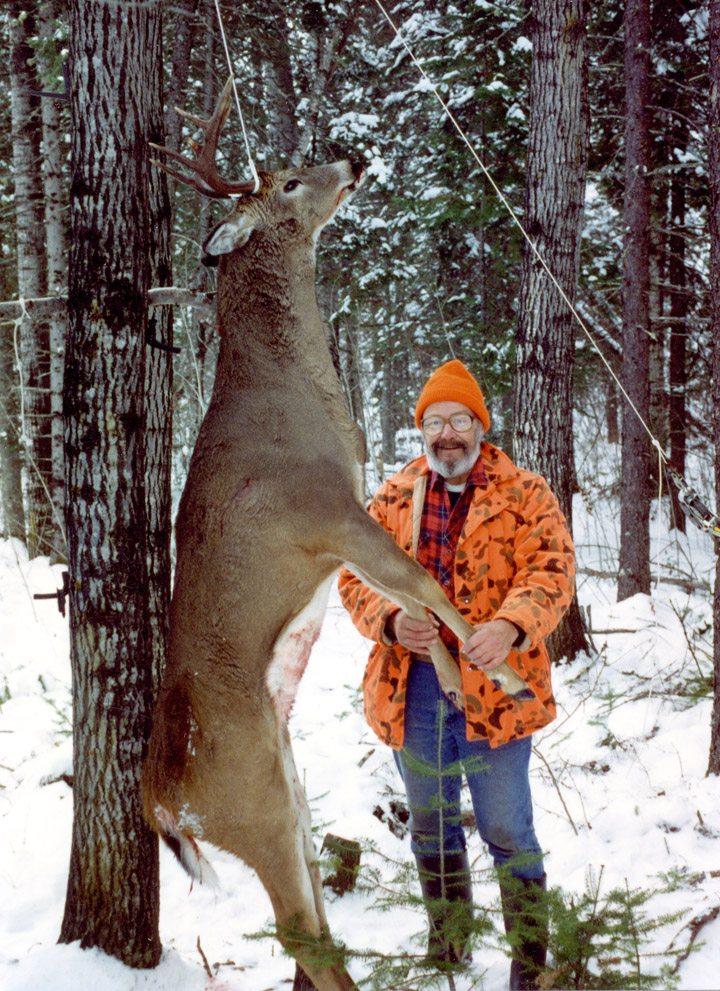
Doc with a 300+ pound buck. (1993, 8-pointer)
Late March or early April — shortly after snow-melt, shortly after adult whitetails have migrated to new or previously used home ranges and before new leaves and biting insects begin emerging — is one of the best times of the year to improve your odds for hunting success this coming fall.
This is a sample video clip from Doc's hunting school DVDs. Every year, Doc held this class in the spring — right when he recommends we do our spring scouting. In the clip, there is an example of a large antler rub from the previous fall — it still looks as fresh as when it was made. (The cameraman, Doc's son John, called a large buck to this spot using a grunt call the prior fall. The buck got spooky when John could only see the buck's nose and part of his body through the brush. He never saw its rack. Only 2 feet of forward motion by the buck was needed.)
Right now, all antler rubs, most ground scrapes and all deer trails are as fresh and obvious in appearance as they were last fall, only, now, they are they easier to spot. If you know what to look for, at no time is it easier to find bedding areas of adult bucks. At no time is it easier to identify favorite browse areas — the tips of nipped-off twigs and branches of favorite woody browse plants as white in appearance as they were last November and December. At no time is it easier to spot (and measure) identifying tracks and droppings freshly made by the deer (except fawns) that will be living in your hunting area next fall. At no time is it easier to make a map of your hunting area, including all significant deer trails and, more importantly, locations of trails, sites and areas that will be frequented by potential quarries this fall. The only thing to guard against while scouting at this time of year is being swayed by abundant deer signs typical of a whitetail wintering area, an area unlikely to be frequented by many, if any, whitetails between the opener and late December.
Based on what you discover, this is also a wonderful time to create the trails that will enable you to travel on foot without being easily identified and avoided (via sight, sound or airborne scent) by the deer you will hunt this fall. Trails made by you at this time of year will have absolutely no negative effect on habits and behavior of quarries this fall (unlike trails made in fall). As you scout, note and mark on your map locations of all potentially productive stand sites, and each time you do this, ask yourself, “How will I get here (taking into account different wind directions) without the my quarry knowing it?” — an essential step to success in whitetail hunting. Upon repeatedly asking this question, you will come to realize exactly where you need to create trails that will allow you to utilize stand sites within easy shooting range of expected paths of quarries without being detected whatever the wind direction.
Upon do this work in spring, because you will know exactly where to look for deer signs later on, your fall (pre-hunt) scouting and your final selection of stand sites will be quick, easy and optimally productive.
If you dream of taking bucks with heavy antlers, this is also the best of all times to enhance the antler growth (and health) of the bucks you hunt (new antlers now just beginning to form). In most areas an inexpensive 50-lb, cattle-type mineral block (not salt) placed beneath a sheltering tree within 200 yards of the bedding area of an adult buck will enable that buck will grow antlers 10–20% greater in mass (maybe making it a “record book buck”).
This is also the time to establish the routine of practice that will insure expert (no-miss) field marksmanship under the most mind-boggling circumstances.
Finally, it's not too early to begin filling-in gaps in hunting gear. If, for example, you do not yet own a portable hunting stool (legs preferably made of wood, not available in sporting goods stores) — an enormously productive tool for hunting today's tree-stand-wary whitetails — this would be a good time to construct one (see Whitetail Hunter's Almanac, 7th Edition, for instructions), thus giving you plenty of opportunity to learn to fire a bow or gun while seated on your stool, a critical skill while quarries are within 50 yards.
Good Luck Hunting,
Doc
